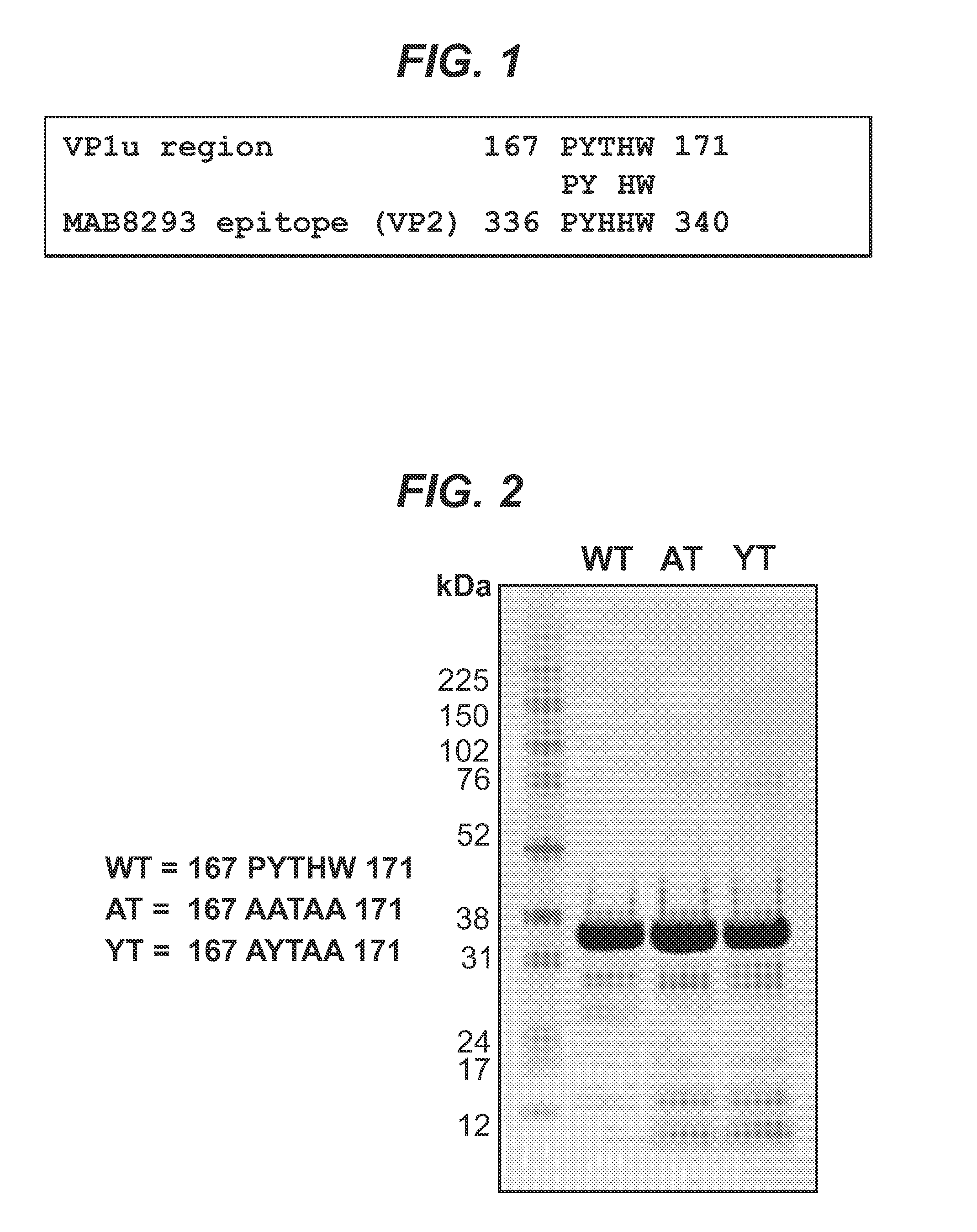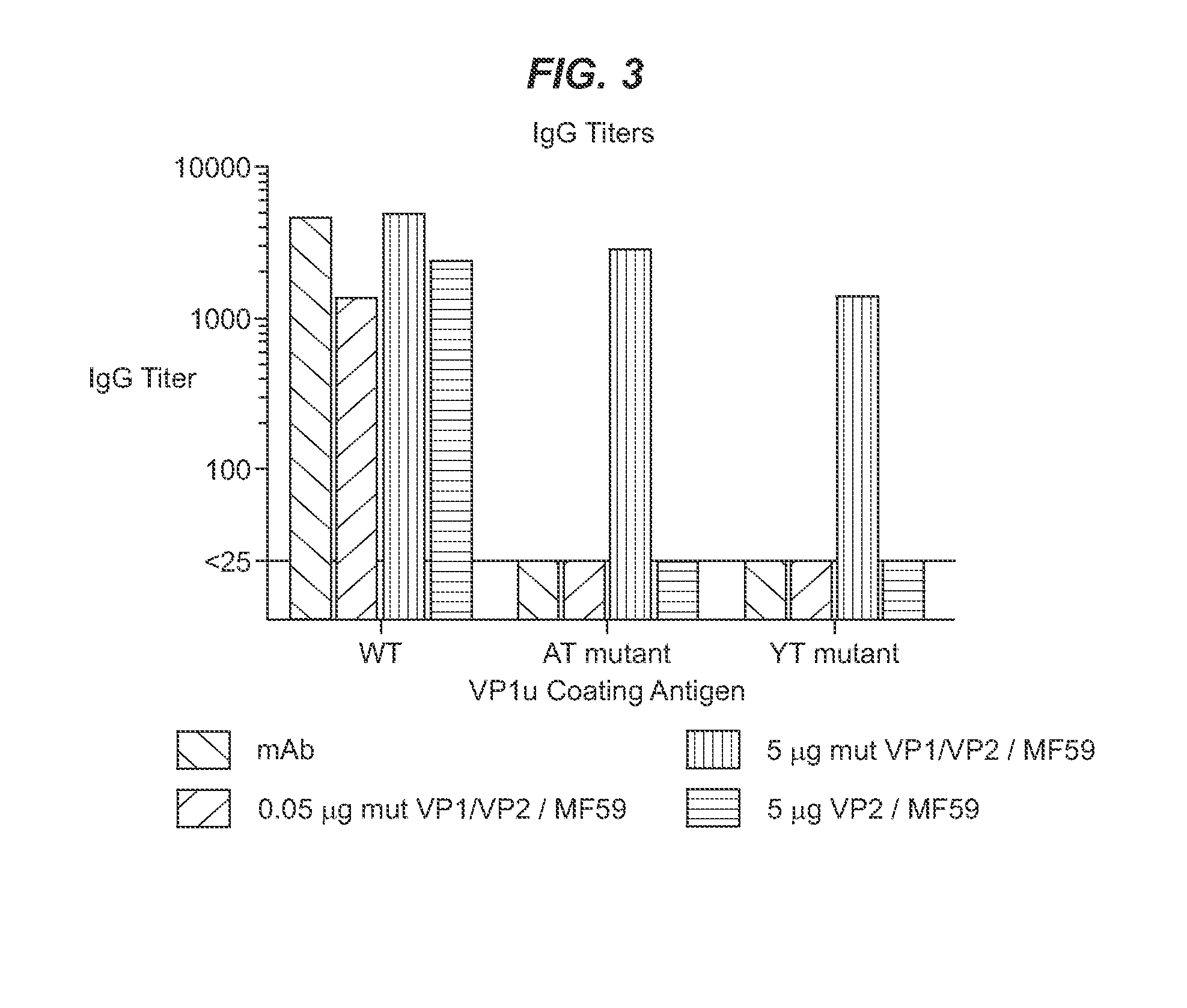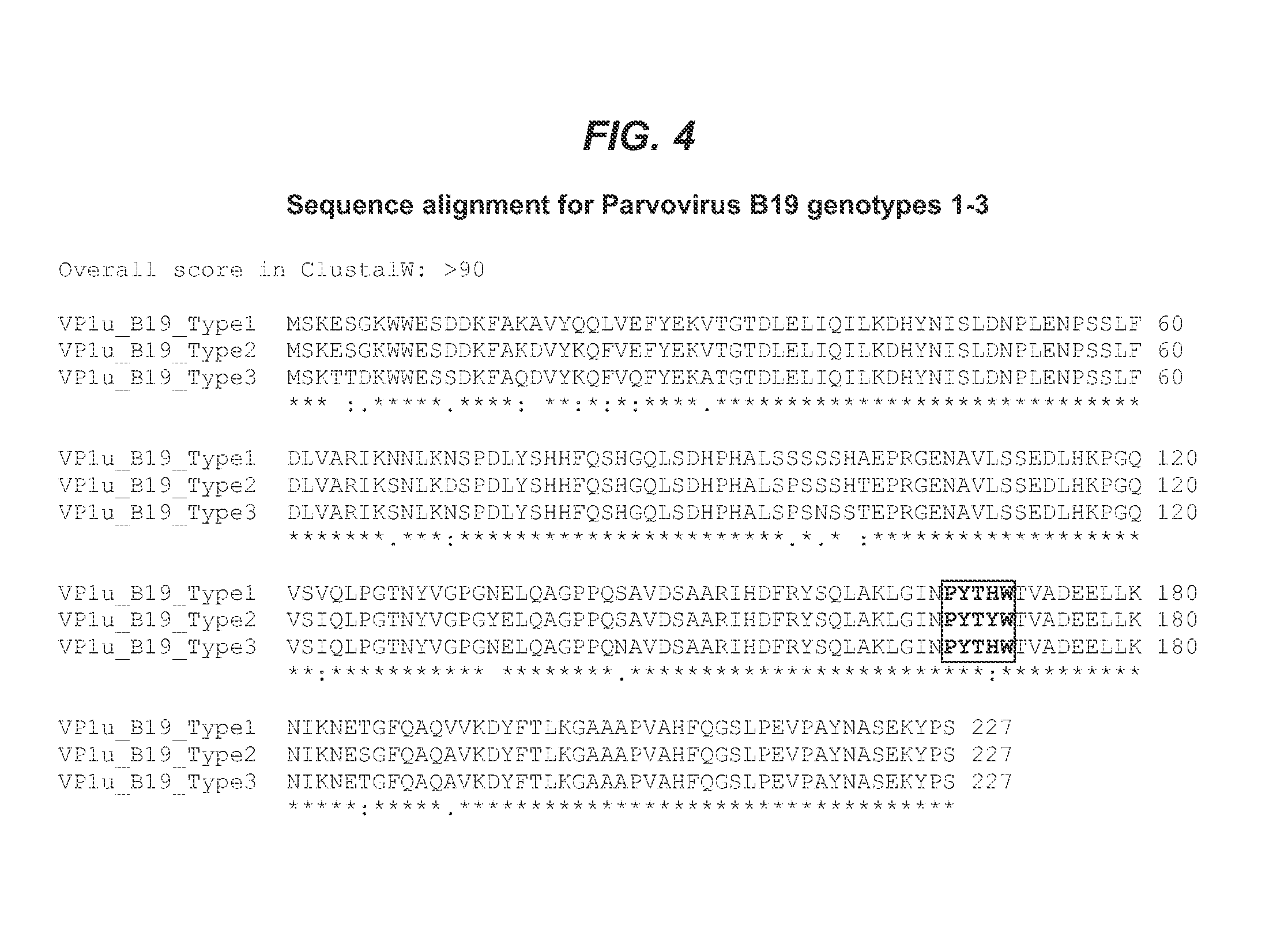Compositions and methods for assessing functional immunogenicity of parvovirus vaccines
a parvovirus and immunogenicity technology, applied in the field of parvovirus vaccine immunogenicity assessment, can solve the problems of no vaccine or practical, limited change, and serious illness, and achieve the effects of long-term treatment, limited change, and no vaccine or practical treatmen
- Summary
- Abstract
- Description
- Claims
- Application Information
AI Technical Summary
Benefits of technology
Problems solved by technology
Method used
Image
Examples
Embodiment Construction
I. Overview
[0044]The present invention relates to mutant parvovirus VP1 unique region polypeptides wherein an epitope for non-neutralizing parvovirus antibodies has been mutated to alter its antigenic properties, related compositions, and methods of using such polypeptides. In certain embodiments, the mutant parvovirus VP1 unique region does not bind antibodies that cross-react with parvovirus VP2.
[0045]Early reports in the literature have suggested that the measurement of antibody binding to the VP1 unique region would be useful for identifying and measuring neutralizing antibodies in sera (Kurtzman, G J et al. J. Clin. Inv. 84:1114-1123, (1989), (Palmer P. Clin. Diagn. Lab. Immunol. (3):236-238 (1996)). Previous studies demonstrated that the VP1 region of parvovirus B19 contains epitopes to the longest lasting neutralizing antibodies that are raised during natural infection (Modrow S and Dorsch S. Pathol Biol (Paris). 50: 326-331 (2002)) and further, that synthetic peptides from t...
PUM
| Property | Measurement | Unit |
|---|---|---|
| time | aaaaa | aaaaa |
| molar ratio | aaaaa | aaaaa |
| molar ratio | aaaaa | aaaaa |
Abstract
Description
Claims
Application Information
 Login to View More
Login to View More - R&D
- Intellectual Property
- Life Sciences
- Materials
- Tech Scout
- Unparalleled Data Quality
- Higher Quality Content
- 60% Fewer Hallucinations
Browse by: Latest US Patents, China's latest patents, Technical Efficacy Thesaurus, Application Domain, Technology Topic, Popular Technical Reports.
© 2025 PatSnap. All rights reserved.Legal|Privacy policy|Modern Slavery Act Transparency Statement|Sitemap|About US| Contact US: help@patsnap.com



